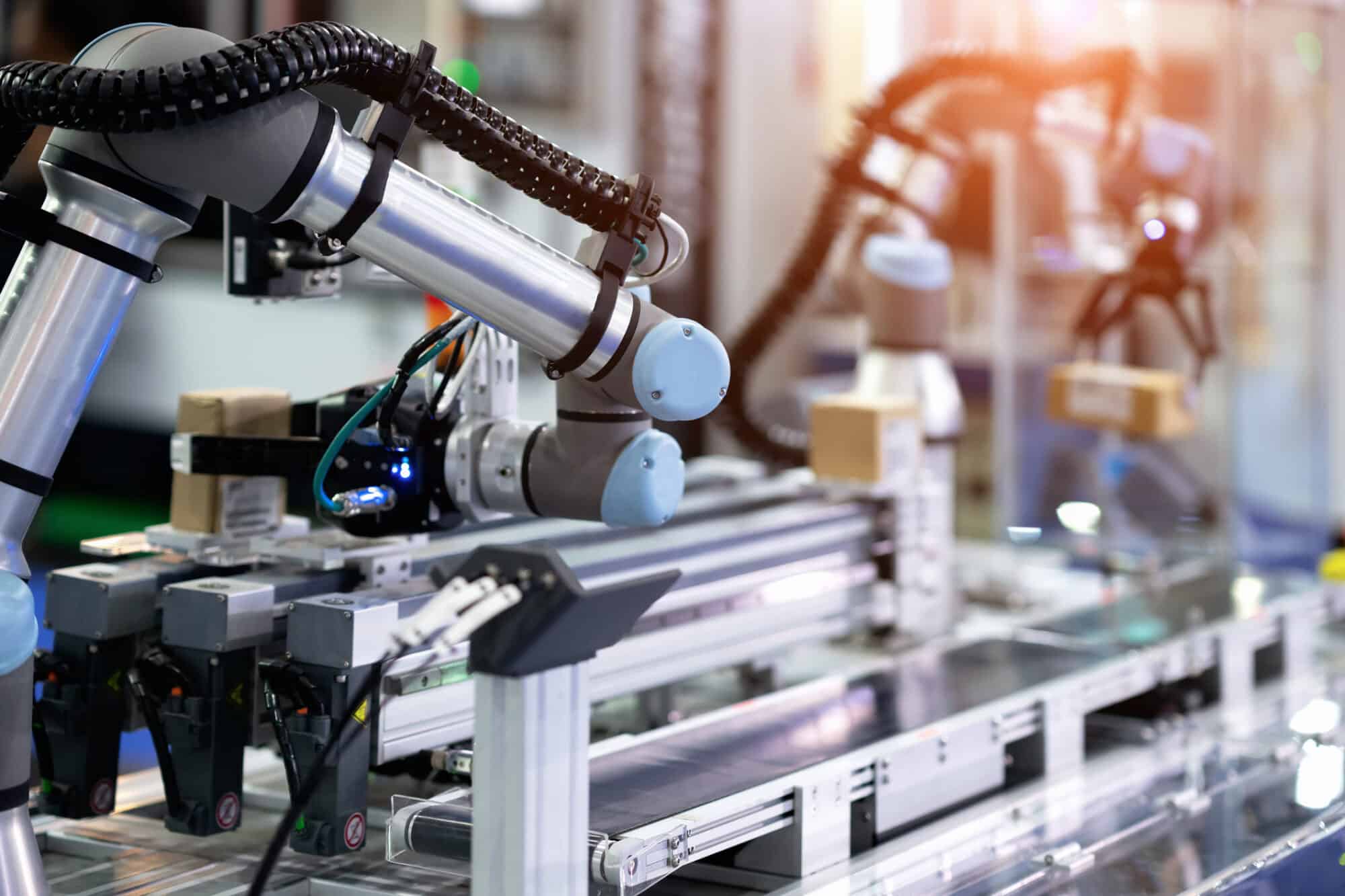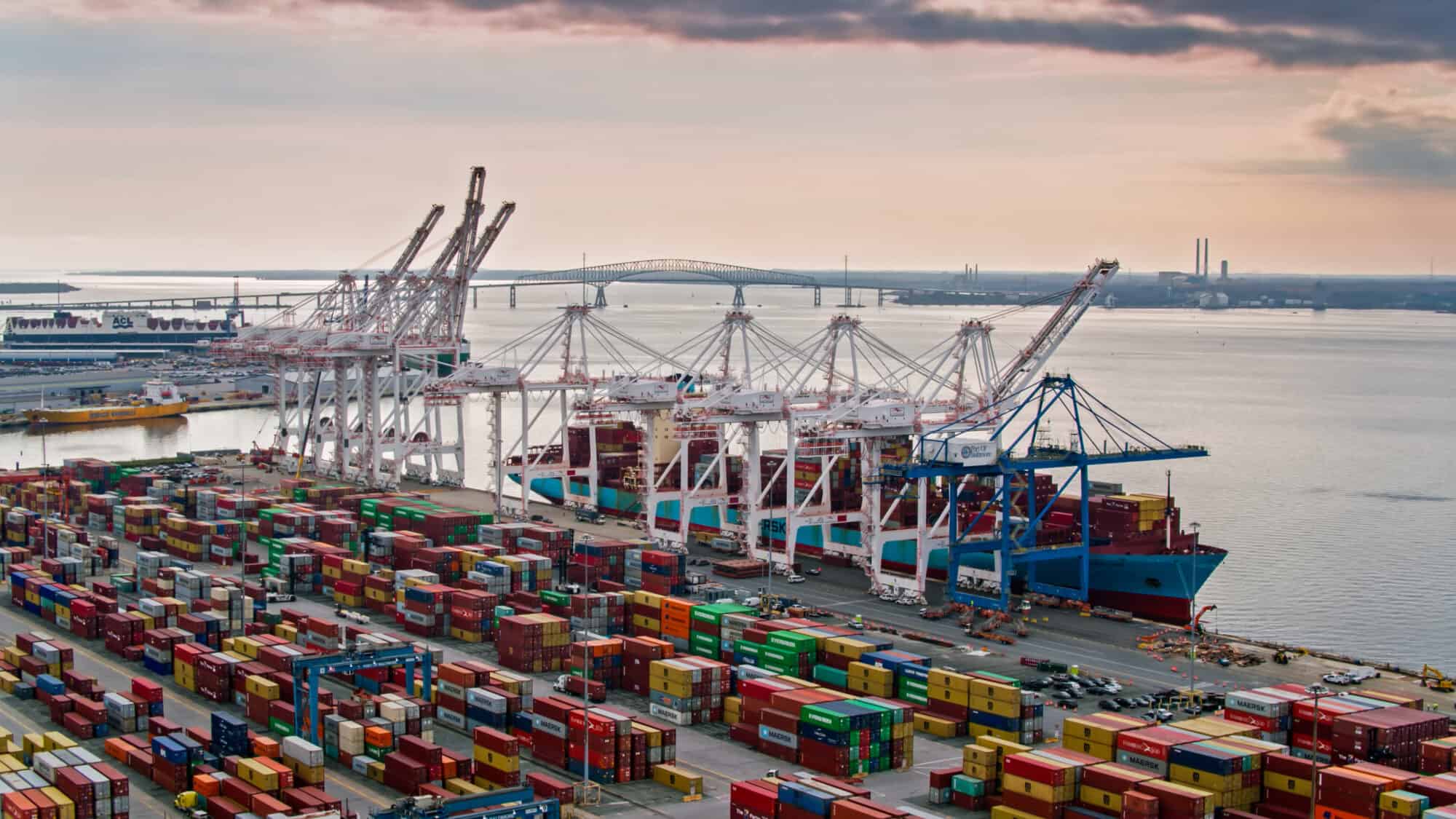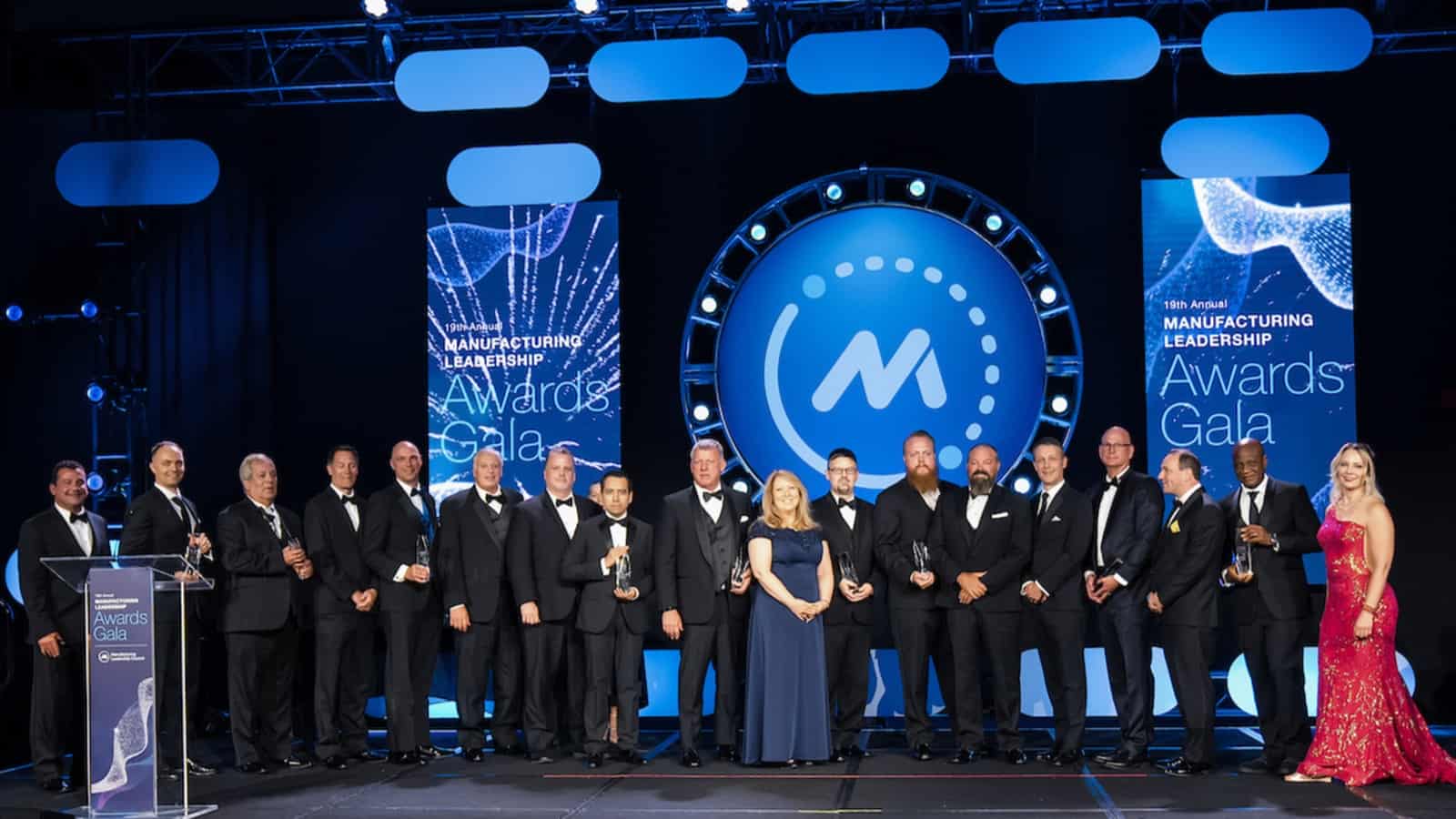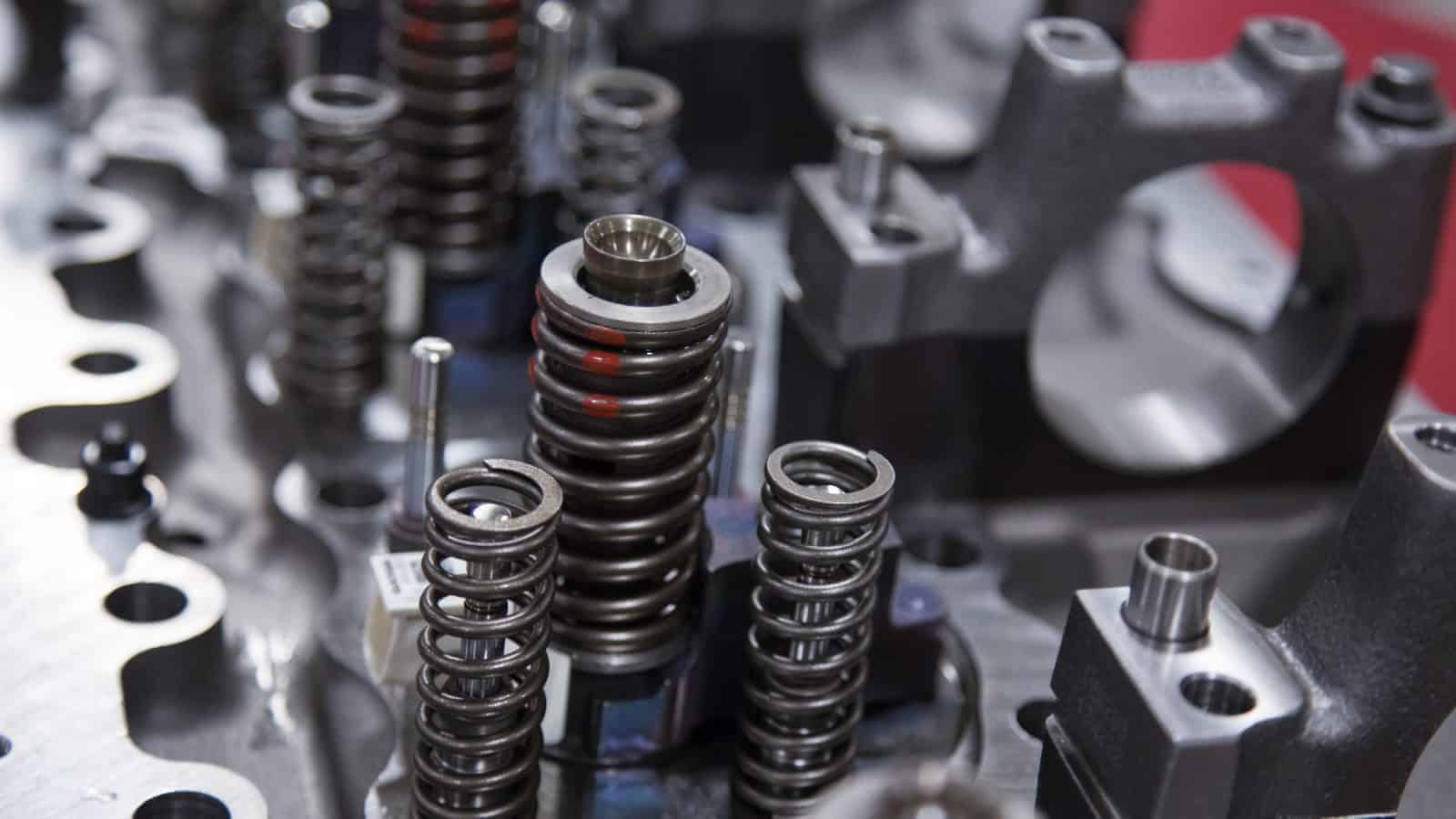Trend of the Week: Smart Factories

In 2024, factories will just keep getting smarter. From product design to supply chain management, the sophistication of Manufacturing 4.0 (the current wave of technological evolution) will keep on growing. Here’s what manufacturers should know about these advances and how the NAM can help.
What manufacturers should do: Manufacturers looking to make their factories smarter are focusing on four key strategies:
- Creating efficiencies to improve the bottom line with automation and other M4.0 technologies
- Leveraging smart factories to overcome challenges, such as the workforce crisis and supply disruptions
- Ensuring connectivity on the factory floor to allow for use of plant data to create new business models and revenue streams
- Using M4.0 technologies to improve quality control, speed time to market, enhance safety, boost profits, contribute to sustainability goals and engage employees
Expert opinion: Companies are increasingly investing in industrial connectivity, according to PTC Vice President of Market Development of IoT James Zhang.
- “Rather than approaching industrial connectivity with point-to-point integrations, companies are developing holistic, enterprise-wide strategies,” he explained.
- “This approach streamlines and standardizes data from heterogenous manufacturing environments to a single industrial connectivity platform to provide secure, reliable data for OT systems, including MES and SCADA, and IT systems, including data analytics and industrial IoT.”
Resources for you: Check out these NAM resources that will help guide you through these technological changes:
- The Manufacturing Leadership Council, the NAM’s digital transformation division, offers extensive advice and expertise on Manufacturing 4.0 technologies and how to use them.
- NAM Cyber Cover can help you protect your smart factories, as the increase in digitization also opens new avenues for cyber criminals.
- Check out this podcast from the Innovation Research Interchange (the NAM’s innovation division), which covers current research into the adoption of cutting-edge technologies.
Read the full 2024 trends report here.
Dockworker Labor Talks to Restart Amid Tension

Contract talks between dockworkers and their employer on the East and Gulf coasts have yet to begin, but tensions are already flaring, The Wall Street Journal (subscription) reports.
What’s going on: “The International Longshoremen’s Association … is already threatening a strike against shipping companies and port employers if a deal on a new multiyear contract can’t be reached before the current agreement expires Sept. 30.”
- The ILA, which represents more than 45,000 dockworkers “at ports from Maine to Texas, has told local chapters to resolve local work issues with employers by May 17 so that a coast-wide deal can be negotiated before the current contract expires. Formal negotiations would be scheduled once the local agreements are reached.”
- Talks began in late 2022 but stalled a year ago.
The background: In September, after 14 months of often-tumultuous negotiations and several walkouts and work stoppages, West Coast dockworkers reached an agreement with their employer, the Pacific Maritime Association.
- The Biden administration stepped in to help broker that deal.
Why it’s important: “Any walkout would hit the gateways in the middle of the busiest part of the shipping season, when retailers and other importers prepare for holiday consumer sales.”
- To avoid potential delays, East Coast importers are expected to bring in holiday-season goods early this year or send more goods from Asia to the U.S. via West Coast ports.
- The large wage increases ILA is said to be pursuing could prove difficult for carriers to sustain, given the post-pandemic decline in freight demand.
Trend of the Week: Building Resilience

Some disruptions—like global pandemics—are just too unexpected to anticipate. As manufacturers consider the unknowns they may face in the years ahead, they are prioritizing general resilience instead of attempting to plan for everything. Here’s what you should know about this major trend in 2024.
What manufacturers should do: Manufacturers should focus on these four areas to increase their resilience, according to the NAM’s experts:
- Enhance cybersecurity to guard against new and emerging cyberthreats.
- View resilience as a necessary tool to protect business amid economic uncertainty.
- Shift leadership strategies to build a strong plan for future success, including establishing a path for development and cultivation of future leaders.
- Plan for more and as-yet-unknown disruptions in the future.
Expert opinion: Mike Lipinski, cybersecurity partner at Plante Moran, advises manufacturers concerned about the rising threat of ransomware. He points out how the dangers have evolved in recent years:
- “Manufacturing businesses that fall prey to ransomware can be attacked multiple times. Adversaries who breach your system sell other cybercriminals information about how they got in. The risk isn’t only data theft and access to information but also the criminals’ ability to create backdoors into your environment.”
Resources for you: Check out these NAM resources that can help companies bolster their resilience:
- Here is a useful guide that can guide you through dealing with disasters.
- Check out the NAM Shipping & Logistics program, which can help you cope with delays in shipments and funds in case the unexpected happens.
- If you’re facing legal issues, the NAM’s Legal Referral Service, powered by Meritas, can connect you to world-class legal talent in every sector of law.
Read the full 2024 trends report here.
Trend of the Week: Process Innovation

Amid an uncertain economy, manufacturers will have to reinvent and upgrade their processes, from training employees to organizing supply chains and more. For today’s manufacturing trend of 2024, we’re looking at manufacturers’ efforts to improve their processes across their operations.
What manufacturers should do: Manufacturers looking to guard against economic upheaval should consider these steps, according to NAM experts:
- Consider improvements to techniques, tools, software, technologies and behaviors.
- Streamline customer service and the way products are sold to customers.
- Optimize the supply chain with help from partners, automation and design improvements.
- Reinvent processes to realize benefits (e.g., speed time to market, cut costs, work around supply challenges).
Expert opinion: Manufacturers are investing heavily in innovation, even as budgets have become tighter, according to EY Americas Industrial Products Sector Leader Brian M. Legan.
- As he points out, “Nearly half (49%) of manufacturing CEOs who participated in the EY CEO Outlook Survey plan on accelerating or maintaining current levels of innovation investment and portfolio transformation.”
- Meanwhile, “more than half of these CEOs (56%) also indicated that the main source of financing for these investments will be from savings generated from business performance improvements.”
Resources for you: Check out these NAM resources to learn more about manufacturers’ process improvements:
- The Innovation Research Interchange is an NAM division devoted to studying the next wave of manufacturing innovation and providing manufacturers with the resources they need to benefit from it.
- You can also get an inside look at process innovation by attending the Manufacturing Leadership Council’s plant tours. (The MLC is the NAM’s digital transformation division.)
Read the full 2024 trends report here.
Reports: Obesity a Challenge for Manufacturing Employers

Obesity is costing U.S. companies and their workers hundreds of billions of dollars a year, according to a new report, the findings of which are in line with those of a 2023 NAM report on employer-sponsored health care.
What’s going on: “Obesity and overweight are estimated to have caused a staggering $425.5 billion in economic costs to U.S. businesses and employees in 2023, according to a report released by GlobalData Plc, a leading data and analytics company,” MarketScreener reports.
- The findings of the GlobalData report, “Assessing the Economic Impact of Obesity on Employers: Identifying Paths Toward Work Force Health and Well-Being,” are consistent with those of a recent NAM report, “ Manufacturers on the Front Lines of Communities: A Deep Commitment to Health Care ,” which notes significantly higher health care costs for individuals who are obese or carry excess body weight.
- “These additional costs account for $170 billion to $200 billion in annual spending in the U.S., making [these conditions] a significant cost for employers,” according to the NAM report.
Why it’s important: Obesity can make workers more prone to absenteeism (taking time off) and presenteeism (being less productive while on the job), both of which come with a significant price tag, according to the reports.
- Some 46.1% of manufacturer respondents to an NAM survey said obesity affected their workplace productivity and employees’ ability to complete their job functions.
- Absenteeism costs employers $82.3 billion each year, with presenteeism accounting for an additional $160.3 billion, according to the GlobalData report.
Impact on manufacturing: The economic impact of excess body weight on manufacturing is the fourth highest of the seven industries examined by GlobalData, at $44.5 billion annually.
What can be done: Manufacturers care deeply about ensuring their employees have access to high-quality, affordable primary care providers who can help employees manage their weight through personalized interventions like diet, exercise, behavior modification, medications and surgery.
The last word: “Manufacturers support efforts to continue to destigmatize these chronic health challenges and approach them like any other condition so that workers and their families feel comfortable choosing from the full suite of available treatment options in order to live healthier and more productive lives,” said NAM Vice President of Domestic Policy Charles Crain.
Trend of the Week: Data in Action

Everyone knows that data is an indispensable resource, but putting it to use is a whole different challenge from collecting it in the first place. Here’s what you need to know about today’s manufacturing trend, the industry’s increasing reliance on data-driven insights.
What manufacturers should do: According to NAM experts, manufacturers seeking to make the most of their data should focus on five key steps:
- Understand how to gather data to enable meaningful analytics.
- Improve data governance for quality and security.
- Determine what data are important to your business and operations.
- Learn how to assign value and view the data through the appropriate lens.
- Know how to use data to make business decisions.
Expert opinion: According to John Petrusick, managing director of NTT’s manufacturing data and analytics practice, companies should consider working backward to some extent, and start by thinking about which business processes the data will influence—and how.
- “Most of us have grown up in a world where we think of data as a flow from source to consumer, or left to right,” he noted. “In such thinking, we have generated analytics and insights historically by first thinking about ‘what data do I have?’ But what if we thought about generating analytics and insights by thinking ‘right to left’?”
Resources for you: Looking for more resources on data management? Start with these NAM offerings:
- This Master Class Series from the Manufacturing Leadership Council (the NAM’s digital transformation division) will guide you through case studies and best practices regarding data analysis.
- CONNEX Marketplace uses data visualization tools to help you make connections to suppliers and buyers, offering exceptional insight into your supply chain.
- The NAM’s Power of Small newsletter keeps small and medium-sized manufacturers up to date on advocacy, policy, digital trends and much more. Check it out.
Read the full 2024 trends report here.
Jennifer Abril to Chair NAM’s Council of Manufacturing Associations
Washington, D.C. – The National Association of Manufacturers announced new 2024 leadership for its Council of Manufacturing Associations at the CMA 2024 Winter Leadership Conference. Jennifer Abril, president and CEO of the Society of Chemical Manufacturers & Affiliates, will serve as chair, and Alison Bodor, president and CEO of the American Frozen Food Institute, will serve as vice chair.
“The CMA’s mission is to demonstrate the vital importance of manufacturing to the American economy,” said Abril. “In collaboration with the NAM, the CMA’s member associations will advocate for job creation, investment and innovation in American manufacturing. The strength and weight of the CMA’s voice is unparalleled, and I am honored to serve as the champion for our collective industries’ resilience and growth.”
Made up of more than 200 industry-specific manufacturing associations representing 130,000 companies worldwide, the CMA creates powerful partnerships across the industry, working with the NAM to unite the manufacturing association community, and ultimately the broader business community, around strategies for increased manufacturing job creation, investment and innovation in America.
“Jennifer and Alison have been instrumental to the success of the CMA, particularly in pushing back against an onslaught of unsustainable regulations that would crush President Biden’s goal of growing manufacturing in the United States,” said NAM President and CEO Jay Timmons. “We are confident that they will work in their expanded roles to amplify manufacturers’ voices and further position our industry for global leadership.”
Abril has led SOCMA since 2016. Prior to that, she served as the president of the International Fragrance Association, North America and held leadership positions at the American Chemistry Council. She previously served as CMA vice chair.
Newly appointed 2024 CMA board members include the following:
- Stephen Kaminski, president and CEO, National Propane Gas Association
- Kelly Mariotti, president and CEO, Association of Home Appliance Manufacturers
- Ellen Thorp, executive director, EPDM Roofing Association
-NAM-
The National Association of Manufacturers is the largest manufacturing association in the United States, representing small and large manufacturers in every industrial sector and in all 50 states. Manufacturing employs nearly 13 million men and women, contributes $2.85 trillion to the U.S. economy annually and accounts for 53% of private-sector research and development. The NAM is the powerful voice of the manufacturing community and the leading advocate for a policy agenda that helps manufacturers compete in the global economy and create jobs across the United States. For more information about the NAM or to follow us on Twitter and Facebook, please visit www.nam.org
NAM Bolsters Government Relations Leadership
Washington, D.C. – The National Association of Manufacturers named Stef Webb as its new Managing Vice President of Government Relations. Webb joins the NAM from Gopuff, the fast-growing $15 billion global consumer goods and food delivery company, where she served as director of corporate affairs, helping to establish its federal affairs program and spearhead public and government affairs during key market entries globally.
“Whether she’s bringing together lawmakers and line workers in Midwest manufacturing facilities or building relationships on Capitol Hill or in world capitals, Stef has built a sterling reputation as an effective and collaborative advocate who does not relent until the policies or priorities she’s fighting for are across the finish line,” said NAM President and CEO Jay Timmons.
Reporting to NAM Executive Vice President Erin Streeter and working alongside the organization’s broader advocacy leaders, Managing Vice Presidents Jamie Hennigan (Communications and Public Affairs), Chris Netram (Policy) and Chrys Kefalas (Brand Strategy), Webb will lead the association’s government relations strategy to advance the competitiveness of manufacturers in the United States.
“In this unpredictable and fast-changing political environment, it’s never been more important to have a government relations team that is steps ahead of where the policy opportunities and challenges could go,” said Streeter. “With Stef helping to lead our team, we’ll build on our track record of preparing for tomorrow, anticipating future needs and being a credible and trusted go-to voice and resource for manufacturers and our nation’s leaders.”
Webb brings proven experience in many areas critical to continuing to drive unapparelled results for the industry. She has held leadership roles in government relations, policy, political fundraising, political affairs, communications, membership, finance and operations. Prior to Gopuff, Webb served as director of federal government affairs at NAM member company Anheuser-Busch, showcasing her ability to bridge divides, winning support for key manufacturing priorities in the United States and creating initiatives—like Brew Across America—that brought policymakers together. During this part of her career, Webb’s successful and effective advocacy work first came to the attention of Timmons and Streeter.
“Manufacturing is the backbone of the American economy and the foundation of business in America, impacting nearly every industry and person,” said Webb. “The NAM has built a reputation as the most trusted voice and resource for manufacturers in the United States, and I’m excited to join this team to create an even better environment for manufacturers to compete, to create more jobs and to improve lives.”
Webb also serves her country as an officer in the United States Navy Reserve.
-NAM-
The National Association of Manufacturers is the largest manufacturing association in the United States, representing small and large manufacturers in every industrial sector and in all 50 states. Manufacturing employs nearly 13 million men and women, contributes $2.91 trillion to the U.S. economy annually and accounts for 53% of private-sector research and development. The NAM is the powerful voice of the manufacturing community and the leading advocate for a policy agenda that helps manufacturers compete in the global economy and create jobs across the United States. For more information about the NAM or to follow us on Twitter and Facebook, please visit www.nam.org.
Manufacturing Leadership Awards Kick Off 20th Season

For two decades, the Manufacturing Leadership Awards have recognized outstanding manufacturing companies and their leaders for their groundbreaking use of advanced manufacturing technology. What started out in 2005 as a modest 50-person gathering in New Orleans has evolved into one of the industry’s most exciting celebrations.
This past June, the Manufacturing Leadership Awards Gala honored an impressive 163 projects and leaders, in front of an electrified crowd of 450 guests. The program’s growth is a testament to the momentum of Manufacturing 4.0 technologies and their success in creating performance improvements and boosting competitiveness.
With more manufacturers adopting digital and data-driven methods every day, there is still much to celebrate. The program’s 20th season is now open for nominations, with expectations running high for another amazing show in 2024.
A proud heritage: Past winners from the Manufacturing Leadership Awards include companies and leaders from nearly every industry, from 10-person shops to multinational enterprises, located all around the world.
- Each entry is reviewed by a judging panel made up of industry experts with extensive experience in technology transformation. The top-scoring projects are selected as category finalists, and the category winners are revealed at the awards gala.
- Finalists and winners report that the awards have helped them gain new customers, boosted employee morale and team camaraderie and encouraged their executive leadership to continue investing in digital technology initiatives.
- Since the program’s inception, more than 1,000 leaders and projects have been honored for their achievements.
A wide range of candidates: The awards program welcomes submissions from small and medium-sized enterprises, as judges look for the overall level of impact that projects have had on a company’s operations—not the dollar amount of their investments.
- If technology has measurably helped a company improve its operational performance, upskill employees or enter new business markets, those projects are excellent candidates for award nominations.
The categories: Over the years, the awards have encompassed an evolving list of categories, currently at nine for projects and two for individuals.
- Project categories include AI and Machine Learning, Collaborative Ecosystems, Digital Network Connectivity, Digital Supply Chains, Engineering and Production Leadership, Enterprise Integration and Technology, Operational Excellence, Sustainability and the Circular Economy, and Transformational Business Cultures.
- Individual categories include Digital Transformation Leadership, for established manufacturing operations executives who lead Manufacturing 4.0 initiatives, and Next-Generation Leadership, for up-and-coming operations leaders aged 30 or younger.
Get involved: All manufacturers in any location and of any organizational size are eligible and encouraged to apply. Program details, rules and instructions for how to submit a nomination are available on the MLC website. Entries are due Jan. 17, 2024.
NAM Strengthens Policy Expertise with New Leadership
Washington, D.C. – The National Association of Manufacturers announced the promotion of Charles Crain as its new vice president of domestic policy. Crain previously served as the NAM’s senior director of tax and domestic economic policy, where he led successful policy efforts on a range of tax and corporate governance issues.
In this new role, Crain leads the association’s focus on a range of priorities, including advancing competitive tax and corporate finance policies, pushing back against the regulatory onslaught facing the industry and advocating policies that strengthen manufacturers’ ability to develop lifesaving treatments. He will also bring together the expertise of the NAM’s Manufacturing Leadership Council and Innovation Research Interchange to drive the debate around the role of AI and technology in the future of manufacturing.
In addition to Crain, the lead policy experts for the association include Vice President of Domestic Policy Brandon Farris, who leads the energy, sustainability, labor and infrastructure policy portfolio; Vice President of International Policy Ken Monahan; and Chief Economist Chad Moutray. In July, Managing Vice President of Policy Chris Netram took the helm of the policy division.
“The NAM’s best-in-class policy team is made stronger with the elevation of Charles Crain. Charles has a track record of success that has benefitted manufacturers, and they will benefit even more from his leadership in this new role. As technology continues to play an increasingly critical role in manufacturing, Charles will be a leading voice in ensuring policymakers foster an environment where our industry can stay globally competitive,” said NAM President and CEO Jay Timmons. “Moreover, the integration of policy, government relations, communications, public affairs and brand strategy within the NAM ensures that manufacturers will be a driving force inside and outside the Beltway on every issue important to the industry.”
“Charles’ new role ensures that manufacturers will have an experienced advocate who can move the needle in debates on tax, health care, corporate finance, regulatory reform and technology policy. These critical issues are key to manufacturing competitiveness,” said Netram.
-NAM-
The National Association of Manufacturers is the largest manufacturing association in the United States, representing small and large manufacturers in every industrial sector and in all 50 states. Manufacturing employs nearly 13 million men and women, contributes $2.91 trillion to the U.S. economy annually and accounts for 55% of private-sector research and development. The NAM is the powerful voice of the manufacturing community and the leading advocate for a policy agenda that helps manufacturers compete in the global economy and create jobs across the United States. For more information about the NAM or to follow us on Twitter and Facebook, please visit www.nam.org.
